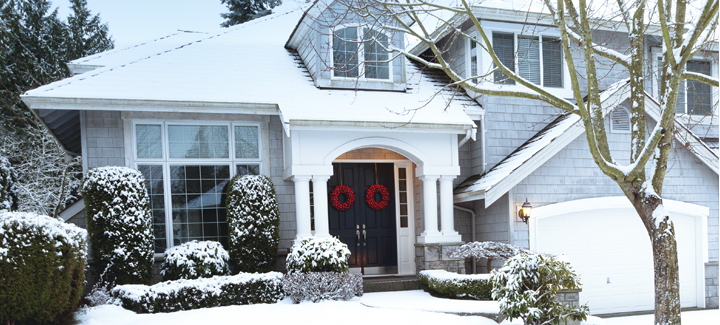Winterize Your Home

Whatever your budget, there are a number of things you can do to prepare your home for the winter. Winter-proofing not only keeps you comfortable during the cold winter months but also saves you money and provides peace of mind. Here are 8 tips to get your home winter-ready:
- Clean your gutters. Make sure there is no debris or damage to ensure proper drainage away from your home.
- Check the trees surrounding your house for any loose or dangling limbs. Snow may cause them to break and cause potential damage to your home.
- Make sure the seal around your windows is intact. This will prevent any drafts or leaks.
- On especially cold nights, leave your water run (at a trickle, nothing much) and open your cabinet doors under the sink. This will prevent your pipes from freezing and bursting in the middle of the night.
- Install a programmable thermostat. They are more energy efficient which helps keep costs down. Plus, it can be set to specific temperatures based on what your family needs during the day or night.
- Use a humidifier to help protect against frost. Set your humidifier to be higher when it’s warmer and lower when it’s colder.
- Protect your water lines. Make sure that they are properly connected and that they have protection from the cold winter air.
Our 8th tip is to invest in a standby generator. A standby generator is one of the best ways to winter-proof your home. During power outages, keeping your electricity running means that you don’t have to worry about frozen water pipes or the added expense of hotel stays because your home is too cold to safely stay in. A permanently-installed standby generator is connected to an external fuel source like natural gas or propane and will kick on automatically, even when you’re not home.
Winterizing your home is a great way to stay one step ahead and reduce potential costs associated with the winter months. Still, unforeseen things can occur. If your home does suffer significant damage, make sure to document the damage for insurance purposes with photos and videos.
Tips from: HGTV


